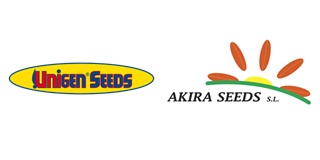
UNIGEN SEEDS SPAIN
Shade net was the most effective in controlling sunscald damage in ?Murcott? Tangor Fruit
?Murcott? tangor (Citrus reticulata ? Citrus sinensis) is susceptible to sunscald injury due to high temperatures during summer in Chiayi, Taiwan. The average rate of sunscald damage in ?Murcott? tangor fruit is 13.6% when no protective measures are used. The objective of this study was to compare the effects of covering developing fruit with white paper bags, calcium carbonate, or shade nets
22 July, 2020
Postharvest, poscosecha, postcosecha, citrus fruits, c?tricos, Murcott, sunscald, quemadura de sol??? ?Murcott? tangor (Citrus reticulata ? Citrus sinensis) is susceptible to sunscald injury due to high temperatures during summer in Chiayi, Taiwan. The average rate of sunscald damage in ?Murcott? tangor fruit is 13.6% when no protective measures are used. The objective of this study was to compare the effects of covering developing fruit with white paper bags, calcium carbonate, or shade nets to reduce the effects of sunscald. A significant reduction in sunscald was realized when using white paper bags, calcium carbonate spray, or white, green, and black shading nets. Calcium carbonate spraying was the most rapid method, but was less effective in controlling sunscald, and resulted in the lowest photosynthetic rate. Compared with trees under shade nets, those under black netting had larger and heavier fruit. There were no significant differences in peel color, titratable acid (TA), total soluble solids/titratable acid (TSS/TA) ratio, or respiration rate for the evaluated treatments. Although all shading materials reduced sunscald, the use of shade net was the most effective in controlling damage related to this, and thus can have significant benefits for commercial citrus (Citrus sp.) orchard operations. Original title and sourcesComparison of Paper Bags, Calcium Carbonate, and Shade Nets for Sunscald Protection in ?Murcott? Tangor Fruit Meng-Shiun Tsai, Tan-Cha Lee and &? Pai-Tsang Chang Department of Horticultural Science, National Chiayi University, 300 Xuefu Road, Chiayi City, 60004 Taiwan HortTechnology, October 2013 The picture is by 21food.com









